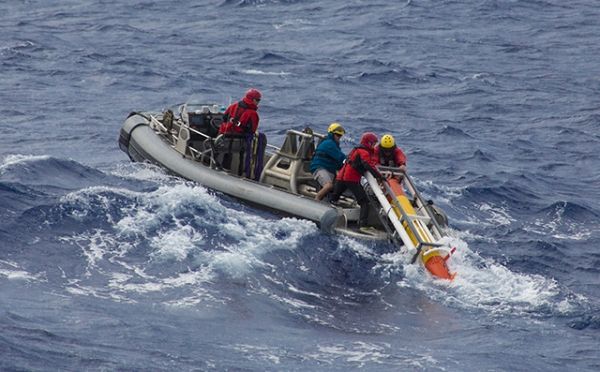Researchers from MBARI, the University of Hawai‘i at Mānoa (UH Mānoa), and Woods Hole Oceanographic Institution, after years of development and testing, have successfully demonstrated that a fleet of autonomous robots can track and study a moving microbial community in an open-ocean eddy. The results of this research effort were recently published in Science Robotics.
Autonomous robotic fleets enable researchers to observe complex systems in ways that are otherwise impossible with purely ship-based or remote sensing techniques. In a time when the COVID-19 pandemic is reducing opportunities for researchers to go to sea, autonomous fleets offer an effective way to maintain a persistent presence in features of interest.
Oceanic microbes are essential players in the global climate system, producing roughly half of the world’s oxygen, removing carbon dioxide, and forming the base of the marine food web. Open-ocean eddies can be over 100 kilometers (62 miles) across and last for months. Phytoplankton (a kind of microscopic algae) thrive when these eddies spin counterclockwise in the Northern Hemisphere and bring nutrient-rich water from the depths up toward the surface.
Read more: Monterey Bay Aquarium Research Institute
Scientists and engineers from MBARI and the University of Hawai’i deployed a trio of autonomous vehicles from the Schmidt Ocean Institute’s R/V Falkor to investigate phytoplankton communities in an ocean eddy north of the Hawaiian Islands. The team is deploying an AUV on leg one of the mission. (Photo Credit: Thom Hoffman/courtesy of Schmidt Ocean Institute)


